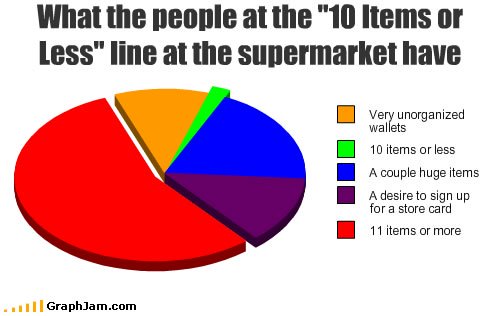 I always appreciate a better, faster and more convenient way of getting things done.
I always appreciate a better, faster and more convenient way of getting things done.
Oftentimes, just being able to do it myself is enough.
The “express” or “10 items or less” lanes always seem to be crowded with people who have no less than nine items, a coupon for everything, items with no bar code and apparently all the time in the world. Yes, I’m talking about people who always pay with a check (and take FOREVER) or pay with a shitload of change they have to count out.
GTFO!!
This is why I love the self-checkout lanes (provided they actually work, and don’t have even longer lines).
I’m also a fan of Redbox. It’s quick, easy and convenient, and I can do it myself.
If you are an HR director with a lot on your plate, it can be much more efficient to empower the employee when it comes to updating routine information such as:
- Emergency contacts
- Changes in address
- I-9
- W-4
- Direct deposit
- Benefits enrollment and summary
- Paycheck calculator
- 401(k)
Do you consider making adjustments to your 401(k) or direct deposit information important? I’d say yes, but your HR director may have plenty of other things to do than administrative tasks such as updating your information.
They’re not babysitters.
This is why I think employee self-service solutions (ESS) are great, because they take the burden off of the “middleman” and save everyone a little time and frustration.
So how does it work?
ESS programs are commonly a part of an all-encompassing HR solution that covers onboarding, talent management, benefits, performance management and the exit process.
With some preliminary instruction and a login number/ID, employees can log in, access their personal information and make changes as needed.
When an employee leaves, they may still have limited access to the portal and be able to make changes to any information that is still important to the company. This is especially important for employees who don’t roll over their 401(k) or choose to continue health insurance coverage via COBRA.
For an employee, these changes may not take more than a few minutes, but for an HR pro, all those little changes can snowball into a substantial amount of time that would be better spent on other tasks.
Some ESS software platforms include:
There are hundreds of solutions that HR professionals can choose from.
I’ll also make note that it can be reassuring and convenient to have access to your private or personal information at any given time — instead of having to go through external channels.
As an HR professional, what is your opinion of ESS software? Is it worth it? As an employee, what do you prefer? As always, what did I get right? What did I miss?


